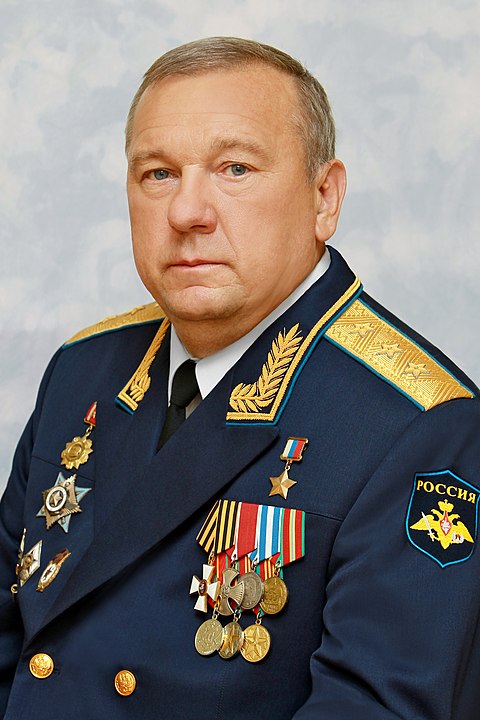
Colonel-General (Ret.) Vladimir Shamanov
“In our opinion, one should not experiment with one of the most combat-ready branches of the Armed Forces, destroying what at one time was saved with great difficulty.”
Almost since the beginning of Russia’s invasion of Ukraine,[i] there has been much speculation in Russia about the future of its mechanized Airborne Troops (VDV). By most accounts, the VDV has performed the best of all of Russia’s Armed Forces, although the VDV has taken heavy casualties.[ii] In Ukraine the VDV has filled a more conventional role than intended and rarely conducted the missions it was designed for, namely, attacks and raids behind enemy lines. The VDV is now being equipped with heavy weaponry that has traditionally not been provided to it, such as T-90 tanks and heavy thermobaric rocket launchers to facilitate this shift in mission. This has created a debate about the future force structure of the VDV. Some commentators proffer that the VDV should become permanently “heavier,” while others suggest an even lighter structure so the VDV can function as true sabotage and reconnaissance groups or assault groups. The excerpted article from the quarterly Russian military periodical Defense and Security provides a third suggestion: stay the current course. The article’s primary author is Colonel-General (Ret.) Vladimir Shamanov, former Commander of the VDV, and current Head of the State Duma Defense Committee. Shamanov states that the VDV should be maintained in its current state as a unique light mechanized combined arms force capable of air-mobile operations. Although Shamanov does not delve into deeper reasoning, this opinion could be based on his belief that although the VDV is not currently fighting as designed, this may not always be the case, and at some point the VDV might again start executing attacks and raids behind enemy lines.
Source:
Vladimir Shamanov, Vladimir Kulakov and Olga Kashirina, “Операция Промежуточный Этап (The Operational Intermittent Phase),” Defense and Security (Quarterly Russian Military Periodical), No. 2,(105), 2023, 15. http://ormvd-zib.ru/n2_2023/morskoe_sodruzhestvo_v_aziatsko-tihookeanskom__regione_str_17-19/
The experience of the SMO [special military operation] shows that lightly armed mobile groups are acquiring great importance. They are able to move quickly, provide cover, move to the rear, and act on the flanks. At the same time, light armored vehicles with modular weapons (machine gun, ATGM, automatic gun) will become their basis. They can become the basis of airmobile forces and form sabotage and reconnaissance and groups. Their tasks are reconnaissance and defeat of the enemy, assisting advancing troops, conducting surprise attacks on important targets, and executing organized withdrawals to [attack] in another direction.
On territory controlled by friendly forces, the use of airborne units as airmobile forces will ensure the strengthening of the strike force on the main axis of attack. This makes it possible to quickly concentrate troops as needed along the front line…
The ‘winged infantry’ is quite capable of acting not only as a combined armed force, but also form the basis of airmobile units and form sabotage and reconnaissance groups. Airmobile units, can inflict sudden blows, that will force the enemy to react, concentrate troops and expose them to attack. If successful, airmobile units can carry out raids throughout the entire tactical depth of the enemy’s defenses.
In addition, the Airborne Troops are able to significantly strengthen the Ground Forces on specified axis — in the event of enemy counterattacks, repels the attack and creates conditions for an attack of the main force.
There is an opinion that the priority way for the development of the Airborne Troops may be their transformation into just sabotage and reconnaissance groups, a “swarm”, capable of striking in several places at the same time, with subsequent evasion of a retaliatory strikes and withdrawal…In our opinion, one should not experiment with one of the most combat-ready branches of the Armed Forces, destroying what at one time was saved with great difficulty. Only in the Airborne Troops after the well-known “reforms”, was the divisional structure of the troops preserved. On its basis, it is possible to quickly create various airmobile formations…
Notes:
[i] Moscow insists on using the term spetsial’naya voyennaya operatsiya (“special military operation”) or spetsoperatsiya (“special operation”) to describe its campaign in Ukraine.
[ii] The lightly armored Airborne Combat Vehicle (BMD) series of combat vehicles has not fared well against Western antitank guided missiles and heavier mechanized Ukrainian forces.
Image Information:
Image: Colonel-General (Ret.) Vladimir Shamanov
Source: https://en.wikipedia.org/wiki/Vladimir_Shamanov#/media/File:Vladimir_Shamanov._Cabinet_photo.jpg
Attribution: CC BY-SA 3.0
